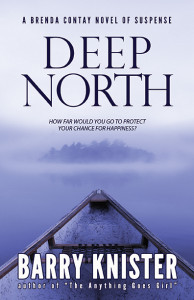by Barry Knister, @BarryKnister
“Pantser” and “Outliner” are terms used by writers to describe different approaches to writing novels. The CEO of the very good website you’re visiting, Elizabeth Spann Craig has written effectively in personal terms on the subject.
In over-simplified terms, pantsers write as inspiration dictates, by the seat of their pants, whereas outliners do advance planning in the form of outlines before they begin writing their work.
Outliners are often both envied and pitied by pantsers. Outliners strike pantsers as drudges, people better suited to accounting or shredding documents. To a committed pantser, the very idea of outlining drains all the joy of discovery from the act of creation by approaching the job of writing as just that. A job, work.
At the same time, pantsers often experience bouts of wistful regret about not outlining. They don’t impose order and system on what they do, thus leaving themselves at the mercy of inspiration, alcohol, controlled and not-so-controlled substances, the muse, metabolism, and shifts in barometric pressure.
Outliners ignore all such crutches or empediments to “getting the work out.” Sick, bored, exhausted—no matter. They forge ahead like weary horsemen bent on reaching Dodge City by nightfall. The seat of the outliner’s own pants is glued to the chair in front of a computer. She or he bangs out each day’s chunk of carefully outlined material, then gets a little double-entry bookkeeping done before bed.
How about readers? Do they approach books in different ways? I think they do, and I would characterize the two polar-opposite styles of reader as Savor Readers and Fuel Readers.
The word “savor” is most often applied to food, wine, scenery, art. We speak of “savoring the moment” when a pleasurable experience draws from us a heightened level of attention and appreciation. In similar fashion, a savor reader gives her focused attention to what’s on the page, to be open to nuance and novelty.
Readers who—for whatever reason–have a special interest in language are more inclined to savor what they read, to delight in subtle observations, turns of phrase, insights into character, thought-provoking themes. They often favor stories that glorify the ordinary, that apply fresh lipstick to the commonplace.
On the other hand, the reader who fuels herself with fiction consumes novels voraciously. She usually wants Big Canvas characters and stories, with lots of movement in time and space, geo-political high stakes and, often, lots of technology, paranormal this-and-that, or galaxies far, far away. Bodice rippers, not frail young poets coughing into scented hankies are what supply her with literary nourishment.
The point of reading fiction for such readers is to be hustled along, transported through action and emotion. The idea is not for the book to make time slow down, but to make it fly, either before the next business appointment, or to escape the tedium of ho-hum domestic existence.
Just as with pantsers and outliners, there is no “good” or “bad” involved here, just the personal needs of readers. But for writers, these distinctions are worth keeping in mind.
The writer who doesn’t plan ahead and develop outlines for her books is almost certainly going to produce less work. That’s okay, provided the books she writes are targeted for savor readers who like to stop and smell the prose roses as they read.
But those writers who write for the darting eyes of fuel readers, for those who fan the pages and quickly move on to the next book, outlining is a necessity. Otherwise, the reader–looking up as the book she’s just tossed over her shoulder lands on the conical mound behind her chair–will not be a happy camper. She doesn’t read for subtle touches of wit or delicate shadings of emotion. She reads for escape, and she has no intention of waiting around while the writer dithers over details.
“Stop gazing out the window!” she shouts. “Get back to work!” Writers would do well to keep her in mind.
After a career of college teaching, Barry Knister returned to fiction writing. His first novel, a gritty thriller about Vietnam Vets titled The Dating Service had been published by Berkley.
Knister’s third novel, The Anything Goes Girl, is the first installment in the Brenda Contay Suspense series (Kindle ebook and CreateSpace paperback). Book Two in the series—Deep North— released July 21.
Barry invites readers to visit his website, BW Knister – Author of Just Bill and the Brenda Contay Mysteries Please use the site’s contact page to write directly to him. He would truly like to hear from you.
Outliners' and pantsers' books may resonate with very different types of readers (via @barryknister): Click To Tweet


I’m a fuel reader, so makes sense I write books that way. Not fast though. Despite the months I take planning and outlining, it still takes me forever to write a story.
Alex, I’d say we’re twinsies. I’m just like that. I keep trying to write faster!
Hello Alex. Thanks for your comment.
Please see my reply below to K.B. Owen. It relates to what you say. It’s a real problem for writers of genre fiction: can they “get the work out” fast enough? I’m in your position, minus the painstaking outlining.
Barry, thanks for posting today–interesting topic!
I’m definitely a fuel reader. I started out as a pantster, but couldn’t ultimately maintain my pace that way and switched to outlining. I’m writing for fuel readers (I think many commercial writers are). I think you’ve nailed it. :)
Elizabeth–
It may sound too Awards Show-thank-you to say it, but truth to tell I consider it an honor to see my post on your site.
I wish I were a savor reader with fuel-reader speed. But I’m not. You are, though–I’m sure of it. How else could you have time left for all that accounting???
This is really interesting! There is, of course, a lot of talk about the different sorts of writers there are, but I think less talk about the differences among readers. And yet, readers don’t all approach a book for the same reasons and in the same way. Fascinating!
Margot–thanks for your comment.
I’m a savor reader, but it’s not really an approach I’ve chosen, or one that’s even the consequence of personal inclination. It’s because I’m a very s l o w reader. I’m sure a good shrink could explain this, but I’m not too concerned. I read less, but by picking savor books, I read what fits my “profile.”
I don’t think I’ve ever read the differences in a writer’s process affecting readers. Personally, I can’t start my morning without proper “fuel”. So it makes sense that I’m a planner, too. Fascinating subject!
Hello Sue, and thanks for your comment.
I wouldn’t say a writer’s process affects readers, but I’m suggesting process is related to readers in terms of the kinds of books the one writes, and the other reads. Or something like that.
Fab post, Barry! Elizabeth is right, when you’re writing genre fiction (I write mysteries) most of our readers are fuel readers. They go through them like popcorn. That makes the pace of the story super-important.
Good luck on your new release!
Hello K.B. Thank you for your kind words.
Because I’m a man writing principally but not exclusively for women, I used to be a B.K., to obscure my, er, identity on book covers (did you know that about 90% of readers of both sexes read only books written by their own gender?). But I decided women wouldn’t automatically avoid books written for them BY A MAN, so I asked my cover designer to use my name.
That aside, my challenge as a writer is that I write at about the speed of a sedated land turtle (the speed at which I read), but my books are categorized as suspense novels. This means the audience is going to be mostly made up of fuel readers.
You see the problem.
Correction: genders don’t write anything. People do the writing. My bad.
Well this was certainly fuel for thought! I think I’m both kinds of reader and writer. There are the books that I savor–multi-course concoctions of exquisite preparation (Louise Penny, Neal Stephenson, etc.), there are well-prepared everyday reads, and there are snacks–the popcorn/potato chip stuff. I choose what I want to read at any given time–sometimes I want a snack, and sometimes I want a feast. Or in- between.
As a writer, however, this is a living hell. Some days I’m a savorer and I write that way. Other days I’m a fuel-er and write that way (complete with comprehensive outline). Reconciling the two ways of writing my mysteries is, to borrow from Elizabeth, MURDER. I’m hoping, with experience, this settles down a bit.
Thanks for the thought-provoking post.
Meg–thanks for your comment. As a writer, I share your problem. Years ago, it led me to write mysteries that were in fact mainstream stories. A young agent with a fresh MFA “loved” this work, but couldn’t sell it. I’d written a genre book that wasn’t a genre book, etc.
As for your multiple-speeds gift as a reader, that I envy. I read literary novels as well as thriller/mysteries, all at the same hopelessly slow rate of speed. I’d like to think this means I read less but with more understanding, but I’m not at all sure.
Very, very interesting post!
I’m at a loss here. I tend to be a “panster.” I’ve never really outlined, except my first book, a memoir of my time in boot camp/Vietnam with the Marines. I used old letters I’d sent home to form a timeline, but it was “fill in the blanks” from there. It was first published in 1990 by Kensington/Zebra, and remains in print with Simon & Schuster/Pocket.
I’ve also written a two-novel Civil War/Reconstruction saga, strictly as a “panster.”
Last year my “literary-type” novel was published about Vietnam combat vets struggling with PTSD years after the war. I based that novel largely on personal experience while in group therapy with other vets. So, no real outlining there either.
Now I’m writing a mystery series (two books published, under contract for four more), but still don’t really outline. I keep a calendar and jot down scenes/events per calendar day as the story progresses. I suppose I should be an “outliner” now that I’m writing fast-paced mysteries, but how does one change in midstream? I’ve read numerous articles on outlining, but nothing really clicks with me. Am I doomed to be a “panster” until the proverbial pen drops from my aged fingers?
I read to savor, and to fuel. My most recent “savor” read was Bram Stoker’s Dracula. After that, I devoured Eileen Goudge’s Cypress Bay mystery, Bones and Roses.
As a writer, I start as a pantser, but always reach a point where I need to stop, think it through, and jot down a simple chapter plan. Without that pause, my plot would be a mess.